This article was co-authored by Laura Flinn and by wikiHow staff writer, Christopher M. Osborne, PhD. Laura Flinn is a National Academy of Sports Medicine (NASM) Certified Personal Trainer, USA Olympic Weightlifting Sports Performance Coach and Certified Fitness Nutritionist, with an additional qualification as a TRX Suspension Trainer. Laura runs her own personal training program based in the San Francisco Bay Area and specializes in topics such as weight loss, muscle growth, cardiovascular training, and strength training.
There are 9 references cited in this article, which can be found at the bottom of the page.
wikiHow marks an article as reader-approved once it receives enough positive feedback. This article received 35 testimonials and 95% of readers who voted found it helpful, earning it our reader-approved status.
This article has been viewed 1,597,113 times.
It takes dedication, perseverance, and a couple lifestyle changes to get a flat stomach in a month, but it's possible if you're committed! The best way to get a flatter stomach is to reduce your overall body fat level with a low-calorie, high-nutrition diet and regular calorie-burning exercise. Though you may not be able to achieve perfect washboard abs in a month, you definitely can establish new, healthier habits that will flatten your stomach in that time and get you on track to accomplish your fitness goals.
Steps
Improving Your Diet
-
1Reduce your calorie intake. If you want a flatter stomach, you need to reduce your body fat, and you do that by burning more calories than you consume. Reducing your calorie intake will cause your body to turn to its internal fuel reserve — the fat you are seeking to eliminate.[1]
- In basic terms, one pound of fat equals roughly 3,500 calories. This means, generally speaking, that you need to burn 500 more calories per day than you consume in order to lose a pound a week, which is considered a healthy weight reduction rate.
- When you’re trying to reduce your calorie intake, it’s important to make each calorie count by choosing low-calorie, high-nutrition foods like vegetables, fruits, and lean proteins. The tables available through the Mayo Clinic provide examples of how making some relatively simple food “swaps” and portion alterations can help significantly reduce your calorie intake.
-
2Increase your fiber intake. Fruits, vegetables, beans and legumes, and whole grains not only offer an array of nutrients, they are also high-fiber foods that can help your weight-loss regimen in several ways. The recommended daily intake for fiber depends on your age and sex; refer to this table to figure out how much fiber you need.
- Some people associate fiber with bloating and therefore advise against it when seeking a flatter tummy. In reality, though, fiber helps flush out your system, which can help reduce a bloated appearance.
- Fiber does, however, provide a more lasting feeling of fullness, which can help you reduce your daily calorie intake.
Advertisement -
3Choose lean proteins. Lean proteins like fish, poultry, and low-fat dairy products offer beneficial nutrients without excess calories or unhealthy fats. They can also help supply you with the energy you’ll need to keep up an active exercise regimen, which is also an important component of achieving a flat stomach.[2]
- Packed with protein and low in carbohydrates and overall calories, eggs can make an excellent breakfast option to help jump-start your day.
- There is also evidence that dairy proteins help increase satiety (your feeling of fullness), which may help you to eat less during the day. Look for low-fat options.[3]
-
4Start meals with soup. Achieving a healthier diet is all about feeling satisfied with fewer calories and without sacrificing beneficial nutrients. It turns out that something as simple as soup can be of great help.
- A study conducted at Penn State University indicates that consuming a bowl of low-calorie soup before lunch or dinner reduces overall calorie intake at that meal by some 20%. Basically, it helps fill you up before you even get to the main part of your meal.[4]
- For the best nutritional benefits, choose a soup that is low in calories, fat, and sodium, and high in vegetables, lean protein, and fiber. Make sure to check labels if you are using prepared soup.
-
5Don't buy into belly-fat-busting food myths. Be skeptical any time you read or hear that "this" smoothie or "that" kind of protein targets and helps eliminate belly fat. No food (or exercise, for that matter) can target fat in a specific area of the body; you either reduce your overall amount of body fat everywhere or nowhere.[5]
- That said, there are foods that can help your stomach appear slimmer by dealing with bloating or a slow digestive system, such as those containing fiber or probiotics, or those lower in sodium.
Exercising Efficiently
-
1Take off your “fat jacket.” It’s a simple analogy, but helps make the point about the types of exercise that offer the best results for fat reduction and, in turn, a flatter stomach. Think of your body’s layer of fat covering your stomach (and elsewhere) as a “jacket” (one of its purposes, after all, is to hold in body heat). Your exercise goal is to shed that jacket.[6]
- Think of it this way — if you were wearing a light jacket, would the type of exercise you are doing make you want to take it off? You want to choose aerobic exercises that warm your body enough that you’d want to shed a real jacket — brisk walking, cycling, dancing, swimming, and so on. Cardiovascular exercises of this sort can burn enough calories to require your body to draw energy from (and thus “shed”) your “fat jacket.”
- It should be noted, however, that you do not want to perform only cardio exercises and neglect building muscles and strength. Cardio burns more fat during the exercise, but muscle burns fat while you are at rest — building muscle, therefore, will ultimately help you burn more fat. You need both types of exercise for bone health and metabolism.
-
2Vary your cardiovascular exercise routines. For fat reduction and weight loss, your goal should be to average thirty to sixty minutes of aerobic exercise daily. The exercise doesn’t need to be intense, but should make you breathe hard enough to make having a conversation a bit of a challenge, and work up at least a light sweat (think again of the jacket analogy from above).[7]
- Cardiovascular exercises get the heart pumping and are great for burning visceral fat.[8]
- Some people prefer the discipline and routine of taking the same jog around the neighborhood each morning, but for many of us, variety helps make aerobic exercise more appealing. Even activities like housecleaning or yardwork can count if you keep up a brisk pace. You may want to keep a daily activity log to track your daily aerobic exercise.
-
3Incorporate strength training. While it's true you'll need to lose the fat over your abdominals so that your muscle tone can show through, don't rely on cardio alone to get the job done. Muscle will help reshape your body and allow you to actually burn calories while your body is at rest, not just when you're hitting the gym. Studies show that those who lift weights have a lower fat mass percentage than those who do aerobic exercise alone.[9]
- While simple sit-ups and crunches are an option, there are seemingly endless ab-toning exercises out there, with names like the “hip dip plank” and the “inner thigh crunch lift.” Employing a variety of core-strengthening exercises is more likely to provide overall toning, but remember that aerobic exercise should be your priority.[10] [11]
-
4Get more "bang" for your ab-exercise "buck." Ideally, instead of focusing on muscle-toning exercises that target only your abdominals, you should seek out alternatives that utilize other muscle groups as well. They often require more exertion, which can help with fat burning. Also, additional muscle tone in the back, chest, shoulders, legs, etc. can improve posture and otherwise help make your belly appear slimmer.
- For instance, you can try:[12]
- The "pike and extend." Lie on your back with your arms and legs extended upward. Crunch your abs and try to touch your toes with your hands. Drop both hands and one leg down so they are parallel to the floor (and your body). Repeat the move while alternating legs.
- The "knee-up with overhead press." Sit on the floor with your knees bent and feet on the ground. Hold dumbbells in each hand at shoulder height. Lean back slightly, extend your arms straight up overhead, and pull in your knees. Hold for a beat, return to the starting position, and repeat.
- For instance, you can try:[12]
Enhancing Your Stomach’s Appearance
-
1Practice good posture. Your mother was on to something when she hounded you about standing up straight. Standing and sitting with improved posture can noticeably reduce the appearance of a bulge in your belly, even before you factor in fat-reduction and muscle-toning strategies.
- Most of us have attempted to “suck in our gut” at some point, but that is of course not sustainable. Proper posture, however, is sustainable. It can be learned and it can be made permanent.
- Visit How to Stand Up Straight for some simple posture strategies and exercises.
-
2Work to reduce your stress level. It turns out that you can place a little bit of the blame for your bulging belly on our caveman ancestors. Part of the “fight or flight” reflex that helped protect our predecessors from sabre-tooth tigers triggers a release of cortisol, which signals the body to store fat in the abdominal area — saving it as energy for tough times to come.[13]
- One of the best ways to reduce cortisol levels, it turns out, is to reduce our overall stress (basically, reducing that "fight or flight" response). In turn, this should help reduce the amount of fat stored in the abdominal area.
- Check out How to Relieve Stress for a wide range of strategies for recognizing, addressing, and reducing your stress levels.
-
3Get more sleep. A lack of sufficient sleep also causes stress on the body, and results in increased cortisol levels, which again trigger fat storage. Getting the amount of sleep that is right for your body should help reduce your cortisol levels, and therefore in turn your fat storage mechanism.[14]
- Most adults need somewhere between seven to nine hours of sleep per day, but everyone’s precise needs are different. How to Be a Morning Person offers some useful tips for determining how much sleep you need — and how to help make sure you get it.
-
4Battle bloating. In addition to an excess of abdominal fat, bloating can be a major (if often temporary) culprit for causing a less-than-flat stomach. Making some changes in diet and habits can help reduce your experiences of bloating.[15]
- Excess salt intake is a common cause of bloating, because it facilitates water retention in the body. Skipping the salt shaker is a good idea, but the vast majority of most people’s sodium intake comes from prepared and packaged foods. Read labels and menu boards for sodium content, and work to remain at or below recommended daily levels.
- Carbonated drinks not only tend to provide empty calories with no nutritional value, the carbonation itself can cause bloating — just another reason to skip the soda.
- Bloating can sometimes be caused by digestive issues, and dairy products containing probiotics can help some people address this problem. Look for products like yogurt and kefir that contain “live and active cultures.”
- Consider that constipation can cause bloating and the feeling of a fat tummy. Exercise is one way to help relieve constipation.
-
5Drink more water. Despite what some people assume, drinking lots of water does not cause “water-weight gain.” Rather, drinking water helps flush out the system and limit bloating.[16]
- The traditional advice has typically been that an adult should drink eight, 8-ounce glasses (two litres) of water per day.
- You should drink more water when you're exercising or on a hot day. We often don't feel thirsty even when our bodies need fluid, so it's a good idea to drink water regularly throughout the day.
- Drinking a glass of water before a meal can also help fill you up faster, thereby reducing your calorie intake.
Exercises and Foods to Help Get a Flat Stomach
Expert Q&A
Did you know you can get premium answers for this article?
Unlock premium answers by supporting wikiHow
-
QuestionHow much weight can I realistically lose in 2 months?
 Laura FlinnLaura Flinn is a National Academy of Sports Medicine (NASM) Certified Personal Trainer, USA Olympic Weightlifting Sports Performance Coach and Certified Fitness Nutritionist, with an additional qualification as a TRX Suspension Trainer. Laura runs her own personal training program based in the San Francisco Bay Area and specializes in topics such as weight loss, muscle growth, cardiovascular training, and strength training.
Laura FlinnLaura Flinn is a National Academy of Sports Medicine (NASM) Certified Personal Trainer, USA Olympic Weightlifting Sports Performance Coach and Certified Fitness Nutritionist, with an additional qualification as a TRX Suspension Trainer. Laura runs her own personal training program based in the San Francisco Bay Area and specializes in topics such as weight loss, muscle growth, cardiovascular training, and strength training.
NASM Certified Personal Trainer
-
QuestionCan you lose belly fat in a month?
 Laura FlinnLaura Flinn is a National Academy of Sports Medicine (NASM) Certified Personal Trainer, USA Olympic Weightlifting Sports Performance Coach and Certified Fitness Nutritionist, with an additional qualification as a TRX Suspension Trainer. Laura runs her own personal training program based in the San Francisco Bay Area and specializes in topics such as weight loss, muscle growth, cardiovascular training, and strength training.
Laura FlinnLaura Flinn is a National Academy of Sports Medicine (NASM) Certified Personal Trainer, USA Olympic Weightlifting Sports Performance Coach and Certified Fitness Nutritionist, with an additional qualification as a TRX Suspension Trainer. Laura runs her own personal training program based in the San Francisco Bay Area and specializes in topics such as weight loss, muscle growth, cardiovascular training, and strength training.
NASM Certified Personal Trainer
-
QuestionDo planks help you get a flat stomach?
 Michele DolanMichele Dolan is a BCRPA certified Personal Trainer in British Columbia. She has been a personal trainer and fitness instructor since 2002.
Michele DolanMichele Dolan is a BCRPA certified Personal Trainer in British Columbia. She has been a personal trainer and fitness instructor since 2002.
Certified Fitness Trainer
References
- ↑ http://www.mayoclinic.org/healthy-lifestyle/weight-loss/in-depth/calories/art-20048065?pg=1
- ↑ Laura Flinn. NASM Certified Personal Trainer. Expert Interview. 18 November 2019.
- ↑ http://www.health.com/health/gallery/0,,20793274,00.html
- ↑ http://www.prevention.com/fitness/fitness-tips/50-ways-get-flat-belly
- ↑ http://health.usnews.com/health-news/blogs/eat-run/2014/02/21/why-sit-ups-wont-get-you-a-flat-stomach
- ↑ http://health.usnews.com/health-news/blogs/eat-run/2014/02/21/why-sit-ups-wont-get-you-a-flat-stomach
- ↑ Laura Flinn. NASM Certified Personal Trainer. Expert Interview. 18 November 2019.
- ↑ http://corporate.dukemedicine.org/news_and_publications/news_office/news/aerobic-exercise-bests-resistance-training-at-burning-belly-fat
- ↑ Laura Flinn. NASM Certified Personal Trainer. Expert Interview. 18 November 2019.
- ↑ http://www.health.com/health/gallery/0,,20793274,00.html
- ↑ http://www.goodhousekeeping.com/health/fitness/g1793/fitness-cruise-abs-0706/?slide=1
- ↑ http://www.fitnessmagazine.com/workout/abs/express/get-a-flat-belly/
- ↑ http://www.cnn.com/2013/10/22/health/flatten-belly-no-crunches-upwave/
- ↑ http://www.cnn.com/2013/10/22/health/flatten-belly-no-crunches-upwave/
- ↑ http://www.cnn.com/2013/10/22/health/flatten-belly-no-crunches-upwave/
- ↑ http://www.prevention.com/fitness/fitness-tips/50-ways-get-flat-belly
About This Article
If you want to get a flat stomach in a month, reduce your caloric intake and increase your intake of fruits, vegetables, lean proteins, beans and legumes, and whole grains. Try to exercise for an average of 30-60 minutes a day, and vary your exercises between aerobic activities like jogging or swimming and ab-toning exercises like crunches, planks, and sit-ups. However, you should also seek out exercises that work all of the muscle groups in your body, as you’ll burn more fat. For tips from a personal trainer on how your posture can enhance the appearance of your stomach, read on!
-Step-1.webp)
-Step-8-Version-3.webp)



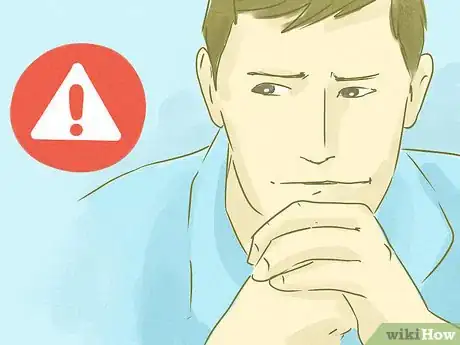
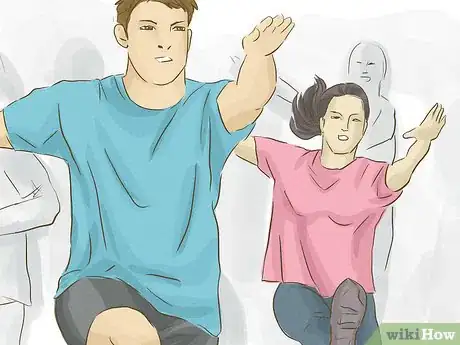
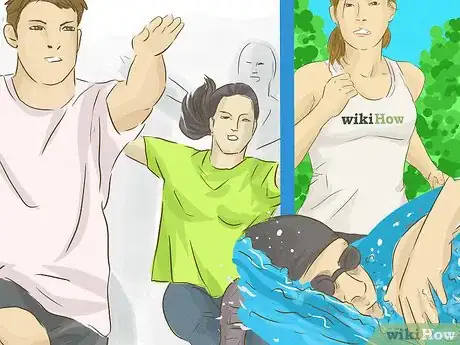



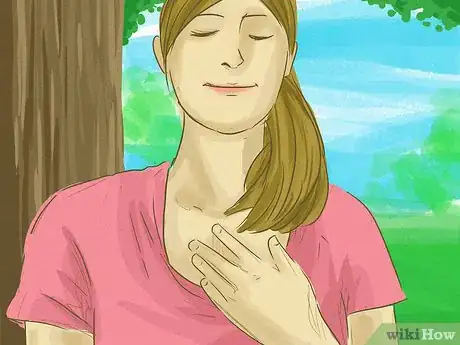
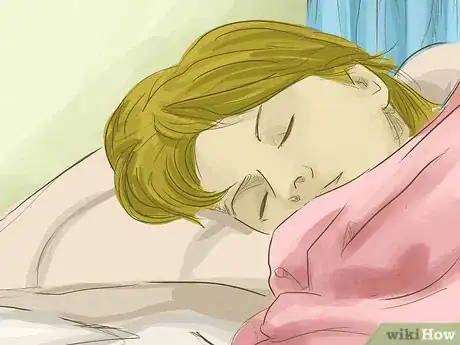
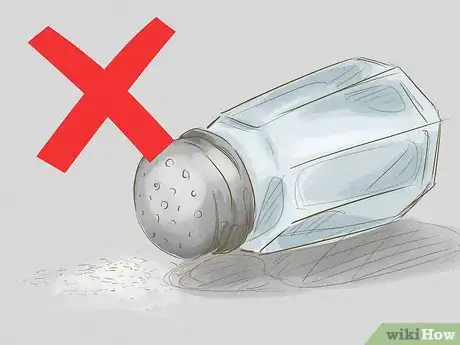
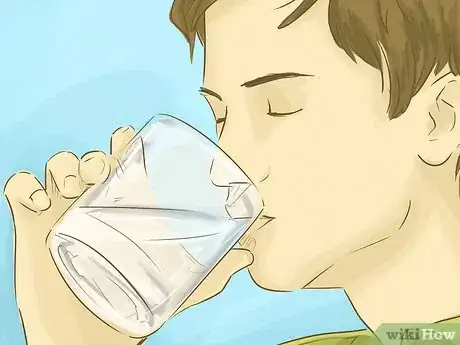
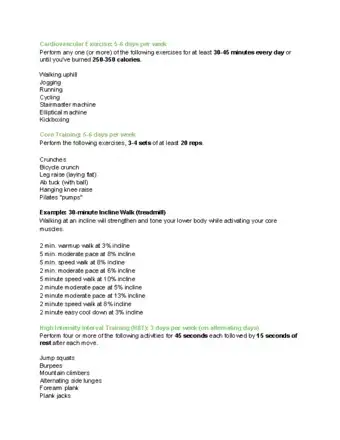
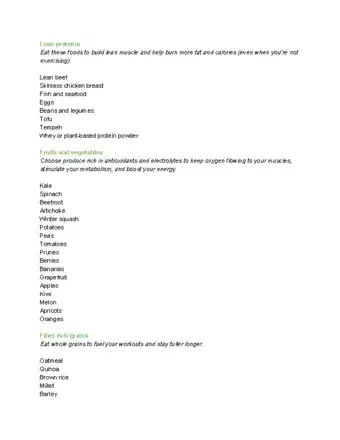


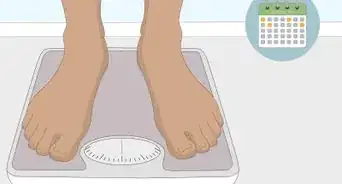

-Step-14.webp)
-Step-14.webp)
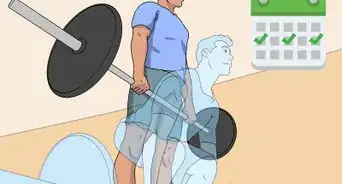
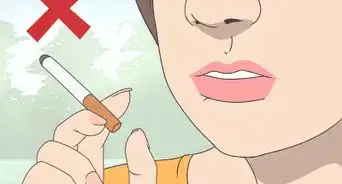
-Step-14-Version-3.webp)


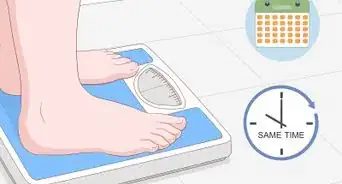



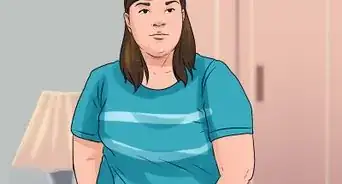











-Step-14.webp)
-Step-14.webp)


































